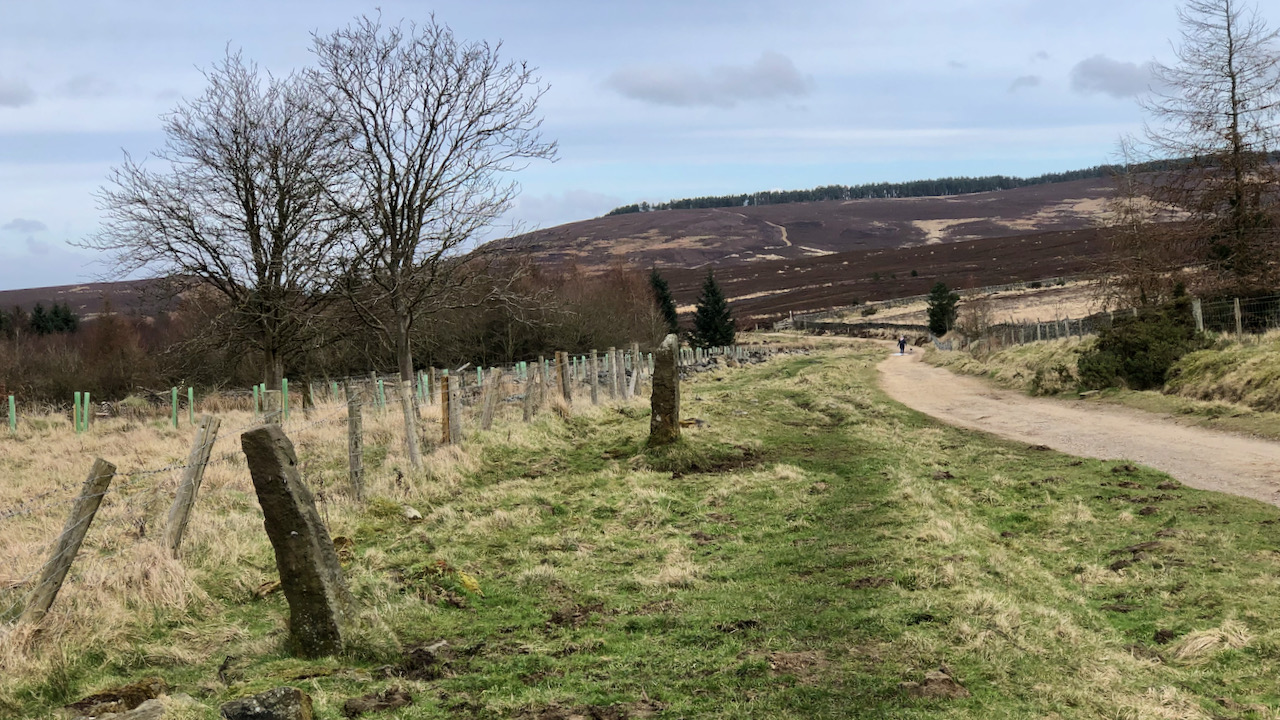High Mossy Grange, just off High Lane, that’s the local name for this section of Hambleton Road, an ancient route snaking from the southern reaches of England to bonny Scotland1NYM NP HER No: 142122NYM NP HER No: 6231. Used to be a post-medieval farmstead, but now High Mossy Grange has all but been wiped off the map. What’s left is this patch of unruly grass surrounded by forestry. A couple of gate posts and some barely noticeable mounds are the last survivors of its glory days.
Coming down from the north into good old northeast Yorkshire, Hambleton, or Cleveland, Road forded the River Tees at Yarm. From there, it meandered through Crathorne, gave Swainby a wide berth along its Back Lane, and then climbed up Scarth Nick onto the moors. For a good 15 miles, it ambled south over the Hambleton Hills, to a decision point at Sutton Bank. One fork, heading south through Oldstead and Coxwold, led to York. The other veered east, taking a descent into Ampleforth and then pushing on to Malton.
This road, ancient as it might be, has seen more than just carts and carriages. Back in the day, it was the chosen route for cattle drovers, the rock stars of livestock transportation, hitting its prime in the late 1700s and early 1800s.
These drovers were like nomads, herding livestock for miles on end with their trusty canine companions. Cows, sheep, pigs, and even gobbling turkeys—all hoofing it on for weeks or months on the road, being moved from grazing fields to market stalls or the butcher’s block.
The unsung heroes of Britain, these drovers, were a hardy bunch. Their days were a marathon of skill and endurance, where knowing the animals and terrain was the key to keeping the herd in check. A bit of a shepherd, a dab hand at veterinary work, a savvy navigator, and a smooth talker, all bundled into one!
Life on the road meant rubbing shoulders with all kinds of folks and sharing the latest gossip. Inns were their watering holes, the social epicentre of their journey. Yet, in the midst of this social swirl, their travels could also get mighty lonesome. Maybe that solitude gave them a moment to ponder and savour nature. But let’s not romanticise it too much—it was a tough gig, with meager pay and weather that can quickly turn nasty like a ferret up a drainpipe. Still, these drovers were the backbone of Britain’s farming history, the link between the quiet countryside and the bustling towns.
- 1NYM NP HER No: 14212
- 2NYM NP HER No: 6231

Leave a Reply